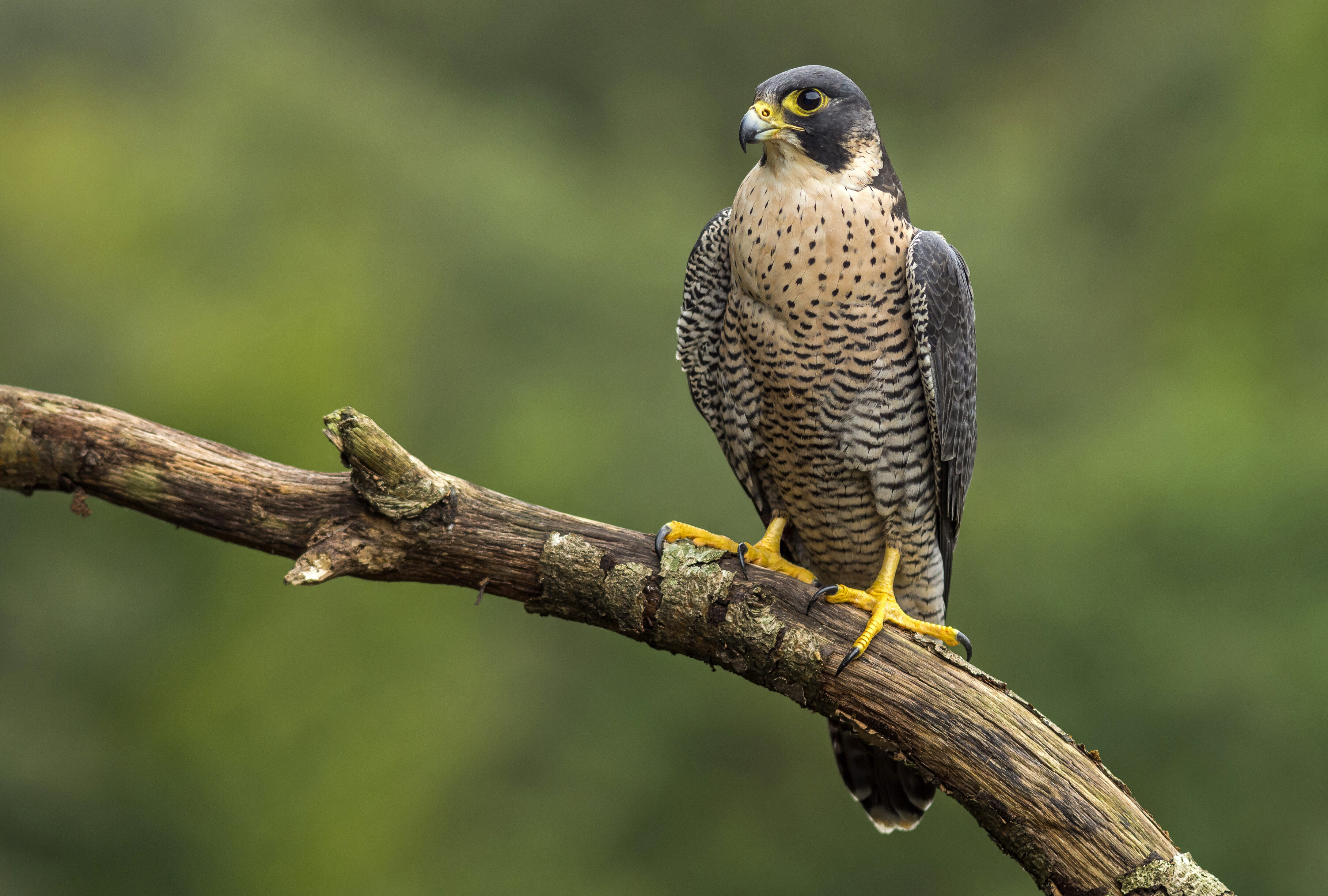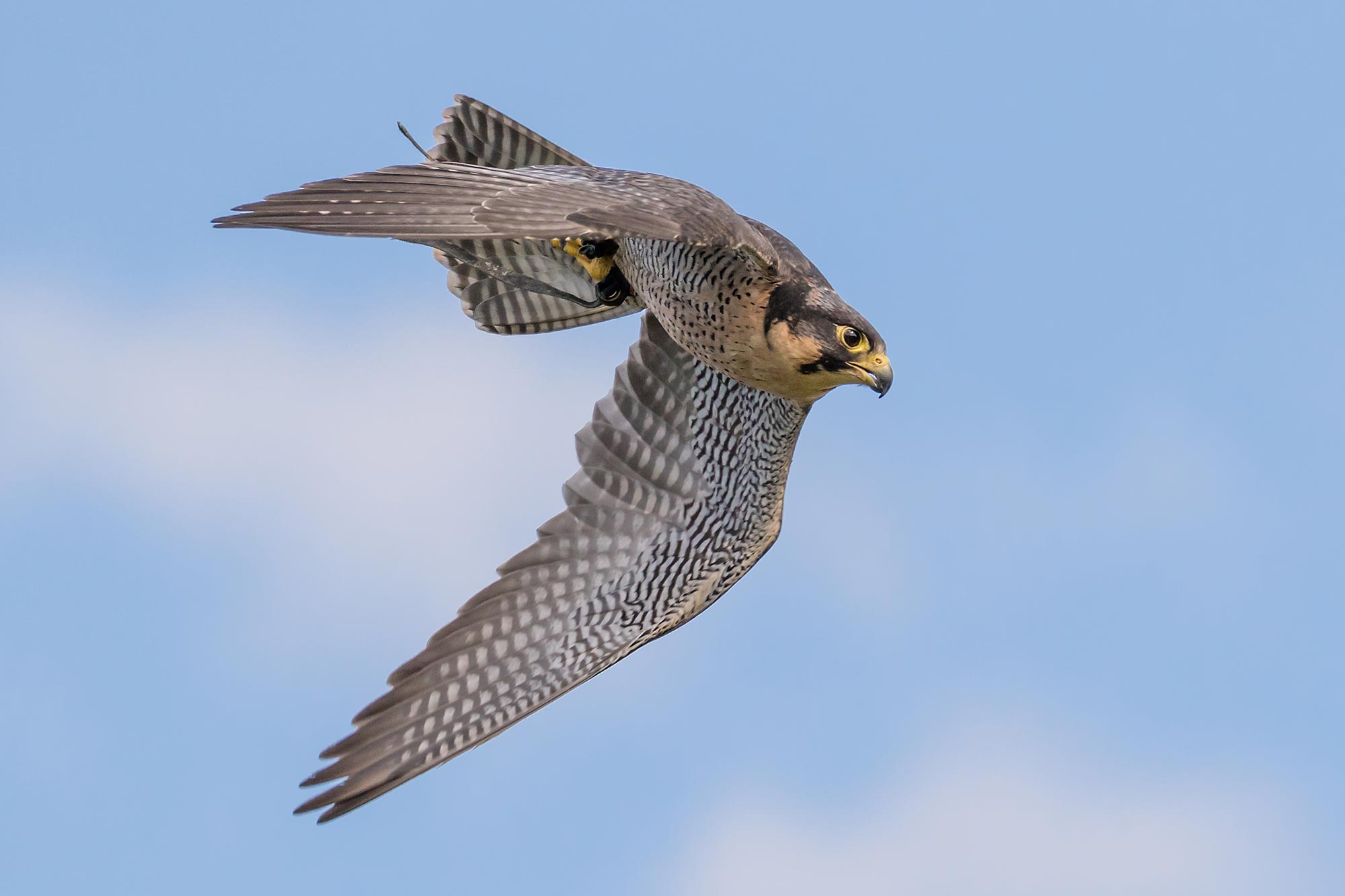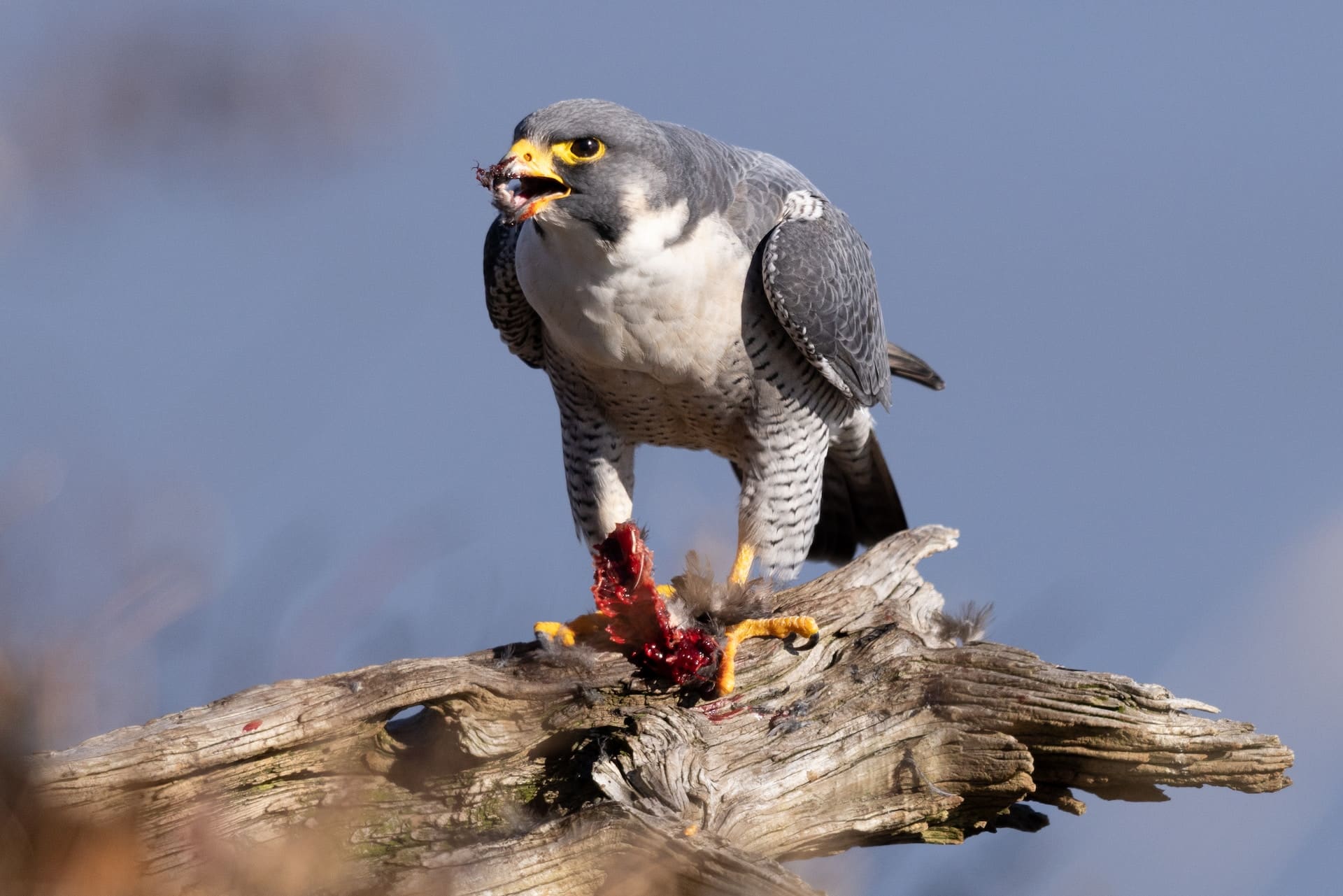Peregrine Falcon Speed: Unveiling Nature's Fastest Hunter
In the vast tapestry of the natural world, few creatures command the same awe and respect as the peregrine falcon. This magnificent bird, a true marvel of evolution, is not merely a predator; it is a living testament to the power of speed. When we talk about the pinnacle of aerial velocity, the conversation inevitably turns to the peregrine falcon speed, a phenomenon that continues to captivate scientists and nature enthusiasts alike. It holds the undisputed crown for the fastest bird on Earth, a title earned through a breathtaking display of raw power and aerodynamic mastery.
The sheer velocity achieved by these raptors during their hunting dives is almost beyond human comprehension, pushing the boundaries of what is physically possible for a living creature in flight. From its sleek, streamlined body to its unparalleled visual acuity, every aspect of the peregrine falcon is meticulously engineered for the pursuit of speed. This article delves deep into the fascinating world of the peregrine falcon, exploring the science behind its incredible velocity, its hunting techniques, and why its speed remains a benchmark in the animal kingdom.
Table of Contents
- The Unrivaled Champion: Peregrine Falcon Speed
- Anatomy of Velocity: How Peregrines Achieve Such Speeds
- The Stoop: Nature's Fastest Hunting Dive
- Beyond the Dive: Normal Flight and Pursuit Speeds
- Sensory Superpowers: Vision and Reaction Time
- Measuring the Unmeasurable: Tracking Falcon Speeds
- Conservation and the Future of Flight
- Witnessing Greatness: Where to See Peregrine Falcons
The Unrivaled Champion: Peregrine Falcon Speed
The peregrine falcon (Falco peregrinus) is not just fast; it is the fastest animal on the planet, a fact that solidifies its legendary status in the natural world. While many birds are known for their swiftness, none can compare to the sheer, unadulterated velocity of a peregrine in full hunting dive. This is the peregrine falcon, nature's fastest predator, a living missile designed for ultimate performance. Its reputation is built almost entirely on its incredible aerial prowess, particularly its diving speed during flight. Consider the astonishing numbers: during normal, level flight, peregrine falcons typically cruise at speeds between 40 and 60 mph (64 to 97 km/h). This alone is impressive, putting them among the faster birds in routine flight. However, it is when they commit to a hunting dive—a maneuver known as a "stoop"—that they truly unleash their full potential. In this breathtaking plunge, they can reach speeds over 200 mph (322 km/h), with some observations pushing this even further. The peregrine falcon's ability to transition from a relatively sedate flight to an explosive, high-speed descent is a testament to its evolutionary perfection. It's this remarkable peregrine falcon speed that makes it not only the world's fastest bird but also one of the most efficient aerial hunters.Anatomy of Velocity: How Peregrines Achieve Such Speeds
The incredible peregrine falcon speed is not a mere fluke; it is the result of millions of years of evolution meticulously refining every aspect of its physiology. The peregrine falcon’s body is a masterpiece of natural engineering, built for speed and precision. From its skeletal structure to its feather arrangement, every detail contributes to its unmatched aerodynamic efficiency and powerful propulsion. Understanding these adaptations helps us appreciate the complexity behind its record-breaking flights.Aerodynamic Design
Physically, peregrine falcons are characterized by their sleek, compact build. They are grayish through their back, wings, and head, with their bellies being white, often barred. This coloration provides excellent camouflage against the sky, but it's their form that truly defines their speed. Their pointed wings are relatively short and stiff, designed to cut through the air with minimal drag. Unlike many other birds of prey that have broad, slotted wings for soaring, the peregrine's wings are optimized for rapid, powerful strokes and controlled dives. When performing a stoop, they pull their wings tightly against their bodies, transforming into an almost perfect teardrop shape. This reduction in surface area minimizes air resistance, allowing them to accelerate rapidly under the force of gravity. The tapering tail also acts as a rudder, providing precise control even at extreme velocities.Muscular Powerhouse
Beneath their sleek exterior lies a formidable engine: powerful flight muscles. Peregrine falcons possess an exceptionally large keel (the breastbone), which provides a broad attachment point for their massive pectoral muscles. These muscles can account for up to 20% of the bird's total body weight, far exceeding the proportion seen in many other birds. This immense muscle mass allows for incredibly rapid and forceful wing beats during level flight and provides the necessary strength for the precise control required during a high-speed dive. Their bones are also remarkably light yet strong, a common adaptation in birds to reduce overall weight without compromising structural integrity. This combination of powerful musculature and lightweight, rigid skeletal structure is fundamental to their ability to generate and withstand the forces involved in achieving such incredible peregrine falcon speed.The Stoop: Nature's Fastest Hunting Dive
The stoop is the signature hunting technique of the peregrine falcon, and it is the maneuver that has earned it the title of the fastest creature on Earth. It is a breathtaking display of aerial precision and raw power, where the falcon transforms itself into a living projectile. The stoop typically begins from a great height, often hundreds or even thousands of feet above its prey. Once a target is spotted, the peregrine folds its wings back, tucks its feet, and plunges headfirst towards the ground, accelerating at an astonishing rate. In a hunting dive—called a stoop—it can reach speeds over 240 mph (386 km/h). This incredible acceleration is primarily driven by gravity, but the falcon's perfect aerodynamic form minimizes drag, allowing it to maintain and build upon that speed. The fastest measured speed of a peregrine falcon is an astounding 389 km/h (242 mph). This record-breaking measurement, a groundbreaking moment for ornithology and animal science, confirms the peregrine's unparalleled velocity. Reaching up to 240 mph (386 km/h) in a dive, the peregrine becomes a blur, an almost invisible force descending upon its unsuspecting prey. The impact force at these speeds is immense, which is why the falcon typically strikes its prey with a clenched foot, delivering a stunning blow that often kills instantly.The Physics of the Plunge
The physics behind the peregrine's stoop are fascinating. As the falcon drops, it is subject to the force of gravity, which constantly accelerates it downwards. However, as its speed increases, so does air resistance (drag). The peregrine's streamlined shape is crucial here, as it reduces this drag significantly. By pulling its wings in, it minimizes its frontal area, allowing it to cut through the air with minimal friction. This allows the gravitational acceleration to dominate for longer, enabling the falcon to reach extraordinary terminal velocities. The control required at these speeds is immense; a slight miscalculation could lead to disaster. Yet, the peregrine executes these dives with pinpoint accuracy, demonstrating an innate understanding of aerodynamics and trajectory. The combination of gravitational pull and its perfectly adapted body makes the peregrine falcon speed during a stoop truly unparalleled.Beyond the Dive: Normal Flight and Pursuit Speeds
While the stoop garners the most attention due to its record-breaking speeds, it's important to remember that peregrine falcons spend most of their time in more conventional flight. Their everyday aerial movements are still remarkably swift and efficient, showcasing their general mastery of the skies. Peregrine falcons can fly at speeds between 40 and 60 mph (64 to 97 km/h) during normal flight. This cruising speed allows them to cover vast territories, patrol their hunting grounds, and migrate over long distances with impressive efficiency. In ordinary flight, this raptor averages more than 30 mph (48 kph). This sustained speed is vital for their survival, enabling them to outmaneuver many other birds and quickly respond to opportunities or threats. When it’s pursuing prey on the level, without the benefit of a gravity-assisted dive, it can still hit nearly astonishing speeds. While not reaching the hypersonic velocities of a stoop, these horizontal pursuit speeds are still incredibly fast, allowing them to chase down agile birds like pigeons and starlings in mid-air. Their powerful wing beats and agile maneuvering capabilities make them formidable hunters even without the vertical advantage. The sheer versatility of peregrine falcon speed, from leisurely glides to explosive dives and rapid horizontal chases, underscores their adaptability and dominance in the avian world.Sensory Superpowers: Vision and Reaction Time
Achieving incredible peregrine falcon speed is only half the battle; the other half is being able to effectively utilize that speed for hunting. This requires an extraordinary set of sensory capabilities, particularly vision and reaction time, which are finely tuned to operate at such high velocities. Without these acute senses, the falcon would simply be a blur of feathers incapable of hitting its target.Flicker Fusion Frequency: A Visual Edge
One of the most remarkable adaptations of the peregrine falcon is its superior visual processing speed. Peregrine falcons have a flicker fusion frequency of 129 Hz (cycles per second), which is incredibly fast for a bird of its size, and much faster than mammals. To put this into perspective, humans typically have a flicker fusion frequency of around 60 Hz. This means that what appears as a continuous image to us would look like a series of flickering frames to a peregrine falcon. This heightened visual processing allows them to perceive rapid movements and changes in their environment with incredible clarity, even when traveling at extreme speeds. Imagine trying to catch a small, fast-moving object while you yourself are moving at 200 mph. For a human, this would be an impossible task, as our brains simply cannot process visual information quickly enough. But for the peregrine, this high flicker fusion frequency allows them to track their prey precisely, adjust their trajectory in milliseconds, and anticipate the prey's evasive maneuvers. This exceptional visual acuity, combined with their incredible reaction time, is what makes their high-speed stoops so devastatingly effective. It's not just about how fast they can go, but how accurately they can operate at that peregrine falcon speed.Measuring the Unmeasurable: Tracking Falcon Speeds
The precise measurement of peregrine falcon speed, particularly during their iconic stoops, has been a significant challenge for ornithologists and animal scientists. For a long time, estimates were based on theoretical calculations and anecdotal observations. However, advancements in technology have allowed researchers to get more accurate readings, confirming the peregrine's legendary status. In a groundbreaking moment for ornithology and animal science, researchers have successfully tracked a peregrine falcon reaching the astonishing speed of 240 miles per hour (386 km/h). This was achieved using specialized tracking equipment, often involving small GPS loggers or radar systems that can follow the bird's trajectory and velocity in real-time. The record-breaking speed of 389 km/h (242 mph) was likely obtained through similar sophisticated methods, perhaps involving high-speed cameras and advanced telemetry. These measurements are crucial not only for confirming the peregrine's speed but also for understanding the biomechanics of high-speed flight and the physiological limits of avian performance. Such research provides invaluable data for conservation efforts and helps us appreciate the intricate adaptations that allow these birds to thrive in their aerial domain. The scientific rigor applied to measuring peregrine falcon speed adds to the credibility and wonder of their capabilities.Conservation and the Future of Flight
The peregrine falcon's story is not just about its incredible speed; it's also a powerful narrative of conservation success. In the mid-20th century, peregrine populations faced a catastrophic decline due to the widespread use of pesticides, particularly DDT. These chemicals accumulated in the food chain, leading to thin eggshells that broke during incubation, severely impacting their reproductive success. The peregrine falcon was on the brink of extinction in many parts of the world. However, thanks to concerted conservation efforts, including the ban of DDT, captive breeding programs, and reintroduction initiatives, the peregrine falcon has made a remarkable comeback. Their recovery is a shining example of how human intervention, guided by scientific understanding and public will, can reverse environmental damage. Today, these magnificent birds can be found nesting in diverse habitats, from remote cliffs to urban skyscrapers, where they prey on city pigeons. While their populations are more stable now, ongoing monitoring and protection of their habitats remain crucial. Ensuring the continued health of peregrine populations means preserving the awe-inspiring spectacle of peregrine falcon speed for future generations to witness and study. Their continued presence is a testament to the resilience of nature and the effectiveness of dedicated conservation work.Witnessing Greatness: Where to See Peregrine Falcons
For many, the opportunity to witness the peregrine falcon speed in person is a truly unforgettable experience. While these birds are naturally elusive and wary, their adaptability has led them to increasingly inhabit urban environments, offering unique viewing opportunities. Peregrine falcons can be found on every continent except Antarctica, making them one of the most widespread bird species. In urban areas, they often choose tall structures like skyscrapers, bridges, and even church steeples as nesting sites, mimicking their natural cliffside habitats. These elevated perches provide excellent vantage points for hunting pigeons and other city birds. Many cities around the world now have live webcams focused on peregrine nests, allowing enthusiasts to observe their daily lives, including their hunting forays, from the comfort of their homes. Outside of urban settings, peregrines can be found along coastlines, in mountainous regions, and near large bodies of water where prey is abundant. Birdwatching hotspots and nature reserves often provide dedicated viewing areas. Observing a peregrine in full flight, perhaps even catching a glimpse of its legendary stoop, is a powerful reminder of the raw power and beauty of nature, and the unparalleled marvel that is the peregrine falcon speed.Conclusion
The peregrine falcon stands as an unparalleled icon of speed and aerial prowess in the natural world. From its astounding normal flight speeds of 40-60 mph to its record-shattering hunting dives exceeding 240 mph, every aspect of its being is a testament to natural engineering optimized for velocity. Its sleek aerodynamic form, powerful musculature, and incredibly sharp senses, particularly its high flicker fusion frequency, all converge to create the ultimate aerial predator. The scientific efforts to measure and understand the peregrine falcon speed have only deepened our appreciation for this magnificent bird. Furthermore, the peregrine's journey from the brink of extinction to a thriving population serves as a powerful reminder of what dedicated conservation efforts can achieve. As we continue to marvel at their incredible capabilities, let us also commit to protecting the habitats and environments that allow these winged wonders to thrive. We encourage you to seek out opportunities to witness these incredible birds in person, whether through a live webcam or by visiting a local birdwatching site. Share your thoughts and experiences with us in the comments below, or explore other articles on our site to learn more about the fascinating world of raptors and avian wonders. Your engagement helps us continue to share these inspiring stories of nature's marvels.
Peregrine Falcon Flying Speed

Peregrine Falcon Flying Speed

Discover the Fastest Peregrine Falcon Dive Speed on Record